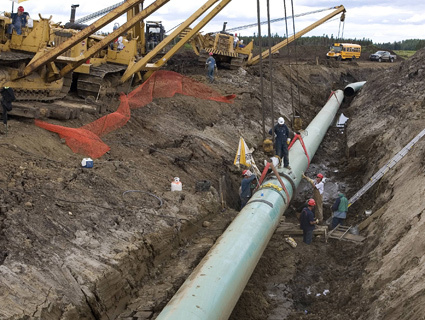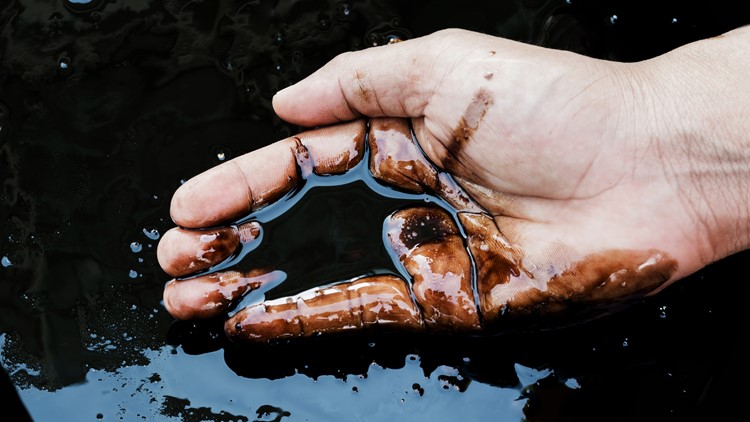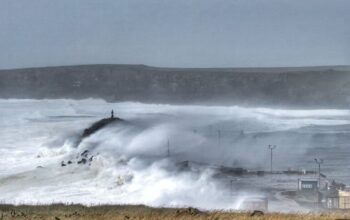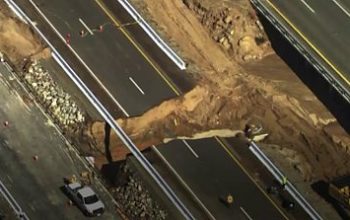Colonial Pipeline has underestimated the amount of gasoline that spilled from a crack in a pipeline running through a North Carolina nature preserve. It appears that the gas spill is much larger and deeper than originally thought, state officials say.

The following written content from Ron Brackett
Colonial Pipeline original estimate of how much gas spilled is no longer valid. Two ATV riders found the spill on Aug. 14 in the Oehler Nature Preserve near Huntersville, North Carolina.
In January, Colonial estimated that 1.2 million gallons had leaked from a ruptured pipe. It was the biggest refined petroleum spill in the U.S. since 2000.
Colonial Pipeline, which owns the pipeline that cracked on Aug. 14, near Huntersville, North Carolina, told the state Department of Environmental Quality (DEQ) the spill estimate of 1.2 million gallons is no longer accurate, according to a DEQ news release. Colonial also said the model used to arrive at that figure is no longer appropriate.
“It is unacceptable that for eight months Colonial Pipeline has been unable to provide a reliable accounting of the amount of gasoline released into this community,” DEQ Secretary Dionne Delli-Gatti said. “We will take all necessary steps and exercise all available authority to hold Colonial Pipeline accountable for what has become one of the largest gasoline spills in the country.”
According to the DEQ news release on Thursday, Colonial reported 944,400 gallons of gasoline have been recovered from the site. Colonial, in an online update, said it has recovered 24,512 barrels — or 1.03 million gallons — of spilled gasoline. That’s about 85% of the previously estimated 1.2 million gallons. DEQ also reported that 1.15 million gallons of water that came in contact with petroleum have been recovered from the site from recovery wells.
Colonial told weather.com its figure includes gas that was immediately captured at the release site, recovered from the recovery well network, from the soil and from soil vapor extraction. DEQ’s does not include all of those, Colonial said.
Colonial said it is reevaluating the estimated release volume based on new mapping of the underground geology at the spill site. The mapping, called Optical Image Profiling, creates a 3D model of the subsurface, similar to an X-ray or MRI. It also uses ultraviolet light and underground probes to detect hydrocarbons.
“Each volume estimate that Colonial has provided since discovering the release has been based on the best available data at that time. That said, while the estimated release volume likely will be revised as a result of this new data, we will continue to follow the science and communicate what we find with the public and our regulators,” Colonial said in an email to weather.com.
Colonial said the new estimate of the total amount of gas that spilled won’t be available for some time.
“We have already begun to work with our team of internal and external experts to analyze the new OIP data and determine what impacts that information may have on our released volume modeling. The process of analyzing the data and integrating it into the complex models will take some time, most likely weeks rather than days,” Colonial said in the email.
Colonial is required to provide a revised assessment by April 26, the state said, in response to a notice of continuing violation that identified 22 deficiencies in February in Colonial’s assessment. Colonial said it told DEQ it needs more time to finalize a revised comprehensive site assessment report.
The company said in its online update the results showed the gasoline “appears to remain contained to the general vicinity of the release location and previously delineated product area,” but there were areas where the gas went deeper than originally thought.
The company did not say how much deeper the gasoline went but said that they believed it could still be removed using the same recovery methods that were ongoing at the site.
“Ongoing volume recovery indicates that the environmental plan is working as designed. Additional wells will be installed, as necessary, to enhance the product recovery efforts,” Colonial said in its email.
The state also told Colonial to extend the residential private well sampling radius an additional 500 feet.
Colonial said it has collected more than 600 surface and drinking water well samples since last August, and no petroleum constituents were detected in those collections.
The gasoline spill was first discovered by two teenagers riding ATVs in the Oehler Nature Preserve east of Huntersville, North Carolina, just north of Charlotte, on Aug. 14. Read more from Weather





